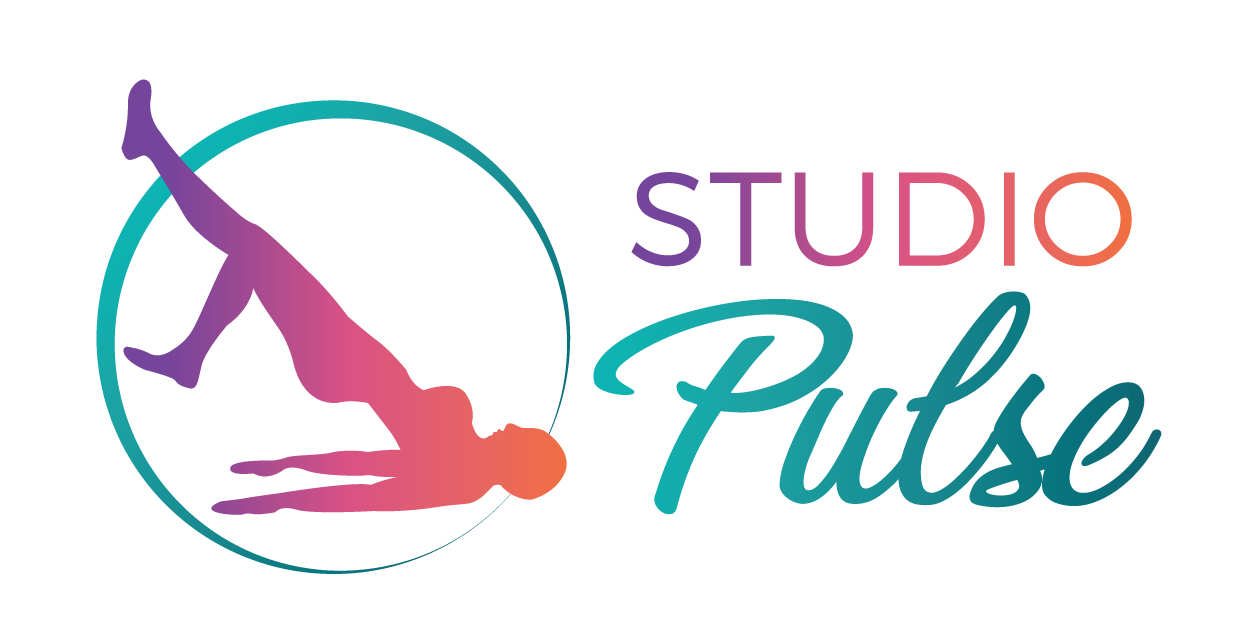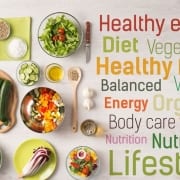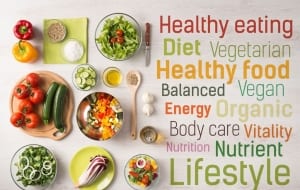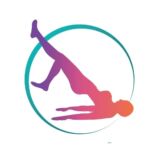Nutrition for sport and exercise
Hi Pulse Nation,
Below is an excellent article by the British Nutrition Foundation about the importance of a healthy diet to get the most out of a exersize regime:
We should all aim to eat a healthy, varied diet based on the principles of the Eatwell Guide, which matches our energy needs. This advice still applies when taking part in regular physical activity, such as going to the gym, swimming, running, cycling or team sports.
Following healthy eating guidelines alone can support an active lifestyle. However when exercising, your body will use up more energy. Unless you are trying to lose weight you may find that you need to eat more food to give your body the extra energy it needs.
Eating well for physical activity and sport can have many benefits including:
- Allowing you to perform well in your chosen sport or activity;
- Reducing the risk of injury and illness;
- Ensuring the best recovery after exercise or a training programme.
A healthy diet for sport and exercise should contain plenty of starchy foods, plenty of fruit and vegetables, some protein foods and some dairy foods. It is also important to stay hydrated.
In this section, we will cover:
- Foods for fuel and exercise – carbohydrates, protein and fat
- How to stay well hydrated
- Putting nutrition into practice – before, during and after exercise
- Common sports nutrition questions – including the role of protein shakes, supplements, sports and energy drinks, and other fluids
Foods for fuel and exercise
Carbohydrates
The main role of carbohydrates is to provide energy.
When they are digested, carbohydrates are broken down into glucose to provide readily available energy for the body to use quickly and effectively. Carbohydrates are the most important form of fuel for exercise and sports activities. The body can store carbohydrates in the muscles and liver as glycogen, and use these stores as a source of fuel for the brain and muscles during physical activity. These glycogen stores are limited, so it is important to be fully fuelled at the start of any exercise. By not having adequate carbohydrate in your diet for exercise, you may feel tired and lacking in energy and not be able to perform at your best. So, regular intake of carbohydrate-rich foods is important to keep stores topped up. The correct food choices can help ensure the body has enough energy for activity, as well as help aid recovery.
Starchy foods are an important source of carbohydrates in our diet. Wholegrain varieties also provide fibre, which is important for digestive health, and a range of vitamins and minerals including B vitamins, iron, calcium and folate.

Good sources of carbohydrates in the diet include:
- Bread
- Breakfast cereals and porridge oats
- Pasta, noodles
- Rice
- Couscous
- Potatoes (with skins) and other starchy vegetables (e.g. sweetcorn)
- Beans and pulses
Starchy foods should make up around a third of the food we eat. Fruit and milk contain carbohydrates in the form of sugars and can help to provide the body with a quick source of energy. They also contain many additional vitamins and minerals that help to keep us healthy. Starchy foods, especially high fibre varieties provide a slower release of energy and take longer to digest, so it’s a good idea to include some in every meal.
Food and drinks that contain high amounts of free sugars, such as sweets, biscuits, cakes and sugars-sweetened soft drinks, should generally be limited as they can lead to excessive calorie intakes which may cause weight gain. Frequent high intake of free sugars can also increase the risk of tooth decay particularly in those with poor dental hygiene. 100% fruit juices also contain free sugars, so limiting intake to a small 150ml glass a day is recommended.
Competitive sports people and athletes may require more carbohydrates than an average gym user to match the intensity of their activity level. Estimated carbohydrate needs are outlined and depend on the intensity and duration of the exercise sessions:
| Duration of sport or exercise sessions | Recommended intake (per kg body weight per day)* |
| 3-5 hours per week | 4-5g |
| 5-7 hours per week | 5-6g |
| 1-2 hours per day | 6-8g |
| 2 + hours per day | 8-10g |
*These requirements are general and consideration of energy needs and type of exercise should be considered.
Try not to meet your requirements by packing your entire carbohydrate intake into one meal. Spread out your intake over breakfast, lunch, dinner and snacks that fit around planned exercise.
The table below shows the carbohydrate content of some common foods:
| Food source | Serving size | Carbohydrate content (g) per serving size |
| Pasta (boiled) | Medium (230g) | 76 |
| Couscous | Average (150g) | 56 |
| Rice, wholegrain (boiled) | Medium (180g) | 53 |
| Jacket potato with skin (baked) | Large (220g) | 50 |
| Wholemeal bread | 2 thick slices (88g) | 37 |
| Sweet potato, boiled | 2 medium (130g) | 27 |
| Banana | 1 large (120g) | 24 |
| Porridge, made with low fat milk | Medium (160g) | 19 |
| Crumpet, toasted | 1 crumpet (40g) | 18 |
| Oatcakes | 2 oatcakes (26g) | 16 |
| Sweetcorn | Average (80g) | 11 |
Protein
Protein is also important for health and physical activity. The main role of protein in the body is for growth, repair and maintenance of body cells and tissues, such as muscle.
Different foods contain different amounts and different combinations of amino acids (the building blocks of proteins). Essential amino acids are those that the body cannot make itself and so are needed from the diet. The full range of essential amino acids needed by the body (high protein quality) is found in:
- Animal sources – meat, fish, eggs, milk, cheese and yogurt.
- Plant sources – soy, tofu, quinoa and mycoprotein e.g. Quorn™.

As some high protein foods can also be high in saturated fat, it is important to choose lower fat options, such as lean meats or lower fat versions of dairy foods.
Most vegans get enough protein from their diets, but it is important to consume a variety of plant proteins to ensure enough essential amino acids are included. More information on vegetarian and vegan diets is available here.
The protein requirements of a normal adult are 0.75g per kilogram of body weight per day. For strength and endurance athletes, protein requirements are increased to around 1.2-1.7g of protein per kilogram of bodyweight per day. If you are participating in regular sport and exercise like swimming/running or go to the gym on a regular basis, then your protein requirements may be slightly higher than the general sedentary population, in order to promote muscle tissue growth and repair. However, most people in the UK consume more than the recommended amount of protein, so increasing your protein intake is generally unnecessary.
Consuming a healthy, varied diet containing nutrient dense foods will ensure you get enough protein without the use of protein supplements or special high-protein eating strategies, even if your needs are a little higher! But try and spread your protein intake throughout the day.
Do I need extra protein to build muscle?
It is a common myth that consuming lots of extra protein gives people bigger muscles. Quite often, people taking part in exercise focus on eating lots of protein, and consequently may not get enough carbohydrate, which is the most important source of energy for exercise. A modest 20g of high quality protein, equivalent to approximately half of a medium sized grilled chicken breast or a small can of tuna, has been shown to be enough for optimum muscle protein synthesis following any exercise or training session. Any more protein than this will not be used for muscle building and just used as energy!
As well as including protein as part of a healthy, balanced diet, the incorporation of some protein after exercise is important for building new muscle tissues and repairing the damaged ones. See the section putting nutrition into practice for ideas of how this can be done.
The table below shows the protein content of some common foods:
| Food source | Serving size | Protein content (g) per serving size |
| Chicken breast grilled | Medium (130g) | 42 |
| Salmon fillet grilled | Large (170g) | 42 |
| Rump steak grilled | 115g (5oz) | 36 |
| Tuna canned in brine | Small can (100g) | 25 |
| Baked beans | 1 can (415g) | 22 |
| Almonds | 100g | 21 |
| Haddock grilled | Medium (85g) | 20 |
| Eggs | 2 average size eggs (100g) | 13 |
| Lentil soup | 1 can (400g) | 12 |
| Half fat cheddar cheese | 4 tbsp grated (40g) | 11 |
| Low fat milk | 300ml | 10 |
| Greek style plain yogurt | Small pot (120g) | 7 |
| Low fat fruit yogurt | Small pot (120g) | 7 |
Fat
Fat is an essential nutrient for the body, but it is also a rich source of energy. Consuming too much fat can lead to excess energy intake which can lead to weight gain over time. It is important to follow current healthy eating guidelines, ensuring fat intakes are no more than 35% of total energy intake from food, with saturated fat intakes not exceeding 11% of total energy intake from food. Fats in foods typically contain a mixture of saturated and unsaturated fatty acids, but choosing foods which contain higher amounts of unsaturated fat, and less saturated fat, is preferable. Most of us eat too much saturated fat so to cut back on intakes, limit foods such as:
- Pastries, cakes, puddings
- Chocolate and biscuits
- Some savoury snacks
- Cream, coconut cream and ice-cream
- Hard cheeses including cheddar
- Butter, lard, ghee, suet, palm oil and coconut oil
- Processed meats like sausages, ham, burgers and fatty cuts of meat
- Fried foods including fried chips

Choose low fat options and foods containing unsaturated fat where possible. Replacing saturated fat with some monounsaturated and polyunsaturated fat helps to maintain healthy cholesterol levels. Good sources of these fats include vegetable oils such as olive, rapeseed and sunflower oils, avocados, nuts and seeds. Polyunsaturated fats provide us with essential fatty acids like omega 3 which are found in sunflower, flaxseed and linseed oil and walnuts, but it is the long chain omega 3 fatty acids which are associated with heart health and these are found in oily fish (e.g. mackerel, salmon and sardines). Click here to see more on fats.
Tips for making simple swaps to cut down on saturated fat:
| Foods containing a high proportion of saturated fatty acids | Swap for… |
| Butter, lard, ghee
Palm oil and coconut oil | Smaller amounts of oil containing unsaturated fats:
Tips:
|
| Processed and fatty cuts of meat |
Tips:
|
| Whole milk, condensed milk or full-fat creams |
|
| Cheeses that are high in fat, (e.g. cheddar) |
Tips:
|
| Salad dressings |
|
| Other tips to help cut down on saturated fat…
| |
| Cooking – frying, deep frying, roasting | Try boiling, poaching, steaming, baking or grilling and add a minimal amount of fat. |
| Shopping | Take time when food shopping and read food labels carefully to help you choose foods that are lower in saturates. |
How to stay well hydrated
Sufficient fluid intake is essential for exercise and optimum recovery. Exercising causes the body to get warmer, so the body tries to cool down by sweating. This causes the loss of water and salts through the skin.
The amount an individual sweats varies from person to person and depends on:
- Intensity and duration – longer and higher intensity exercise can cause greater sweat loss.
- Environmental temperature – in hot, humid conditions sweat loss can increase.
- Clothing – the more clothing that is worn, the quicker you are likely to heat up which may cause greater sweat loss.
- Genetics – some people are just more likely to sweat than others.
Generally, the more a person sweats, the more they will need to drink.

Small water losses are not harmful. However, dehydration (water loss in excess of 2-3% body mass) can cause tiredness and hinder performance by reducing strength and aerobic capacity (especially in longer duration exercise), as well as having a negative effect on any further exercise sessions. So, try and stay hydrated before, during and after exercise to prevent dehydration – water is generally best, but in cases of high-intensity exercise and excessive sweating, an isotonic drink may be better (see later section that covers other drinks).
For more information on healthy hydration click here
Putting nutrition into practice
The timing of eating and exercising can be important for how you feel and perform during your chosen activity. The body needs the correct fuel in the tank to perform well, however you want to avoid feeling too full or too empty during exercise.
Individuals vary in their preferred timing of food intake and amount that can be eaten before exercise. Some may find two hours is plenty of time to digest their meal, whereas others may feel uncomfortable when taking part in activity and need a bit longer. Experimenting with what, how much and when will help decide what suits you best!
Before:
|
During:
|
| After: Food and fluid intake is also important for optimum recovery after exercise.
|
Tips to plan your meals and snacks:
|
Ideas for meals and snacks
Below are some examples of suitable meals and snacks for an individual who exercises.
| Breakfast
| Lunch | Dinner | Snacks |
| Porridge with low fat milk and fruit | Baked potato (skin on) with tuna, and salad (use low fat mayonnaise) | Wholemeal pasta with grilled chicken and vegetables in a tomato based sauce | Fruit Vegetables sticks with houmous Low fat fruit yogurt Malt loaf Reduced salt/sugar baked beans on wholemeal toast Guacamole, ½ wholemeal pitta Rye crispbread with low fat cheese and grapes Unsalted nuts or seeds Low fat milk Fruit smoothie (made with low fat milk and banana) Oatcakes with peanut butter |
| Muesli (no added sugar) or wholegrain cereal, with low fat milk and fresh or dried fruit | Eggs (boiled, poached, scrambled, omelette) on wholemeal toast with vegetables | Chilli con carne – lean mince, kidney beans, chopped tomatoes and brown rice | |
| Wholegrain or granary toast with peanut or other nut butter and 100% fruit juice (150ml) | Chicken and salad sandwich, using wholemeal bread or wrap | Salmon with boiled new potatoes (skins on) and vegetables | |
| 2 thick slices of wholemeal toast with scrambled egg, a grilled tomato | Lentil and vegetable soup with whole wheat roll | Stir fry – whole wheat noodles, lean meat (chicken, turkey or beef), tofu or prawns and vegetables. | |
| Low fat greek or plain yogurt with banana, berries, seeds and cereal (e.g. oats) | Couscous or quinoa salad with chicken, roasted vegetables and kale | Fish pie (potato topping) with green vegetables |
Common sports nutrition questions
Do I need to take protein shakes and supplements?
|
| When exercising, should I drink anything other than water? In most cases, for exercise and activities up to one hour, water is sufficient for hydration. For exercise that is longer and more intense, other types of drinks may be considered.
Sports drinks can be expensive compared to other drinks; however it is easy to make them yourself! To make your own isotonic sports drink, mix: 200ml fruit squash, 800ml water and a pinch of salt.
|
Should I take vitamin or mineral supplements?
|




